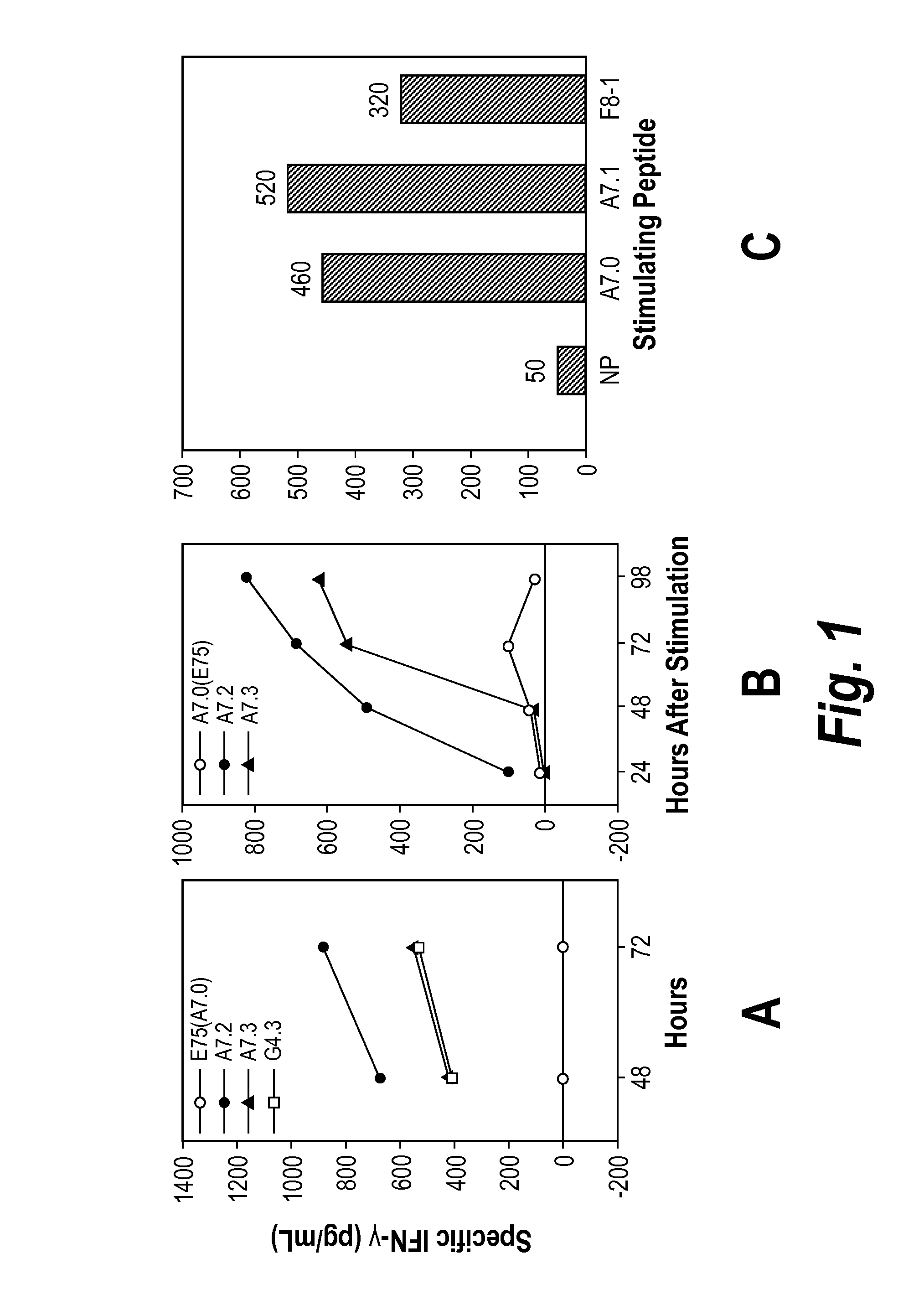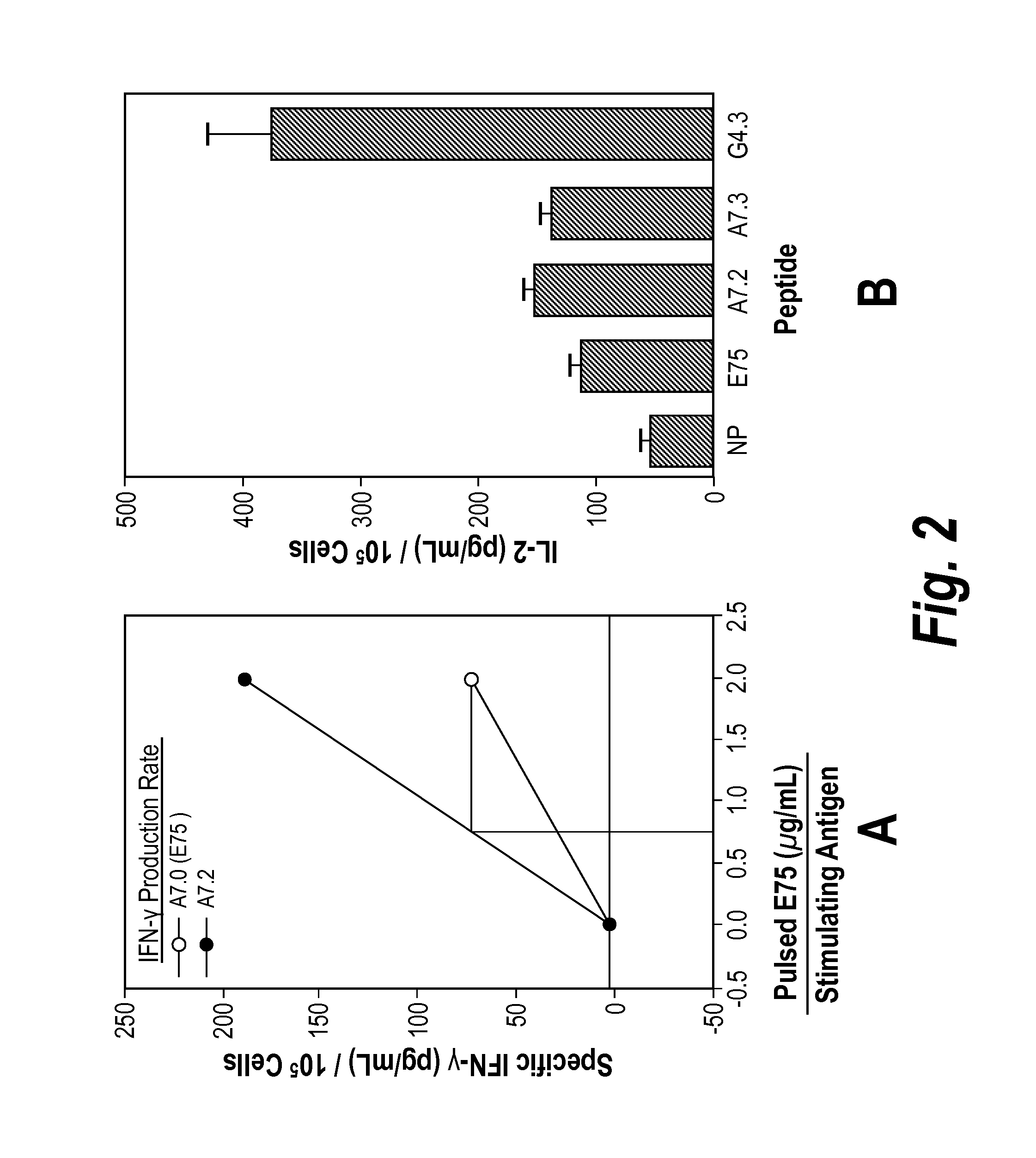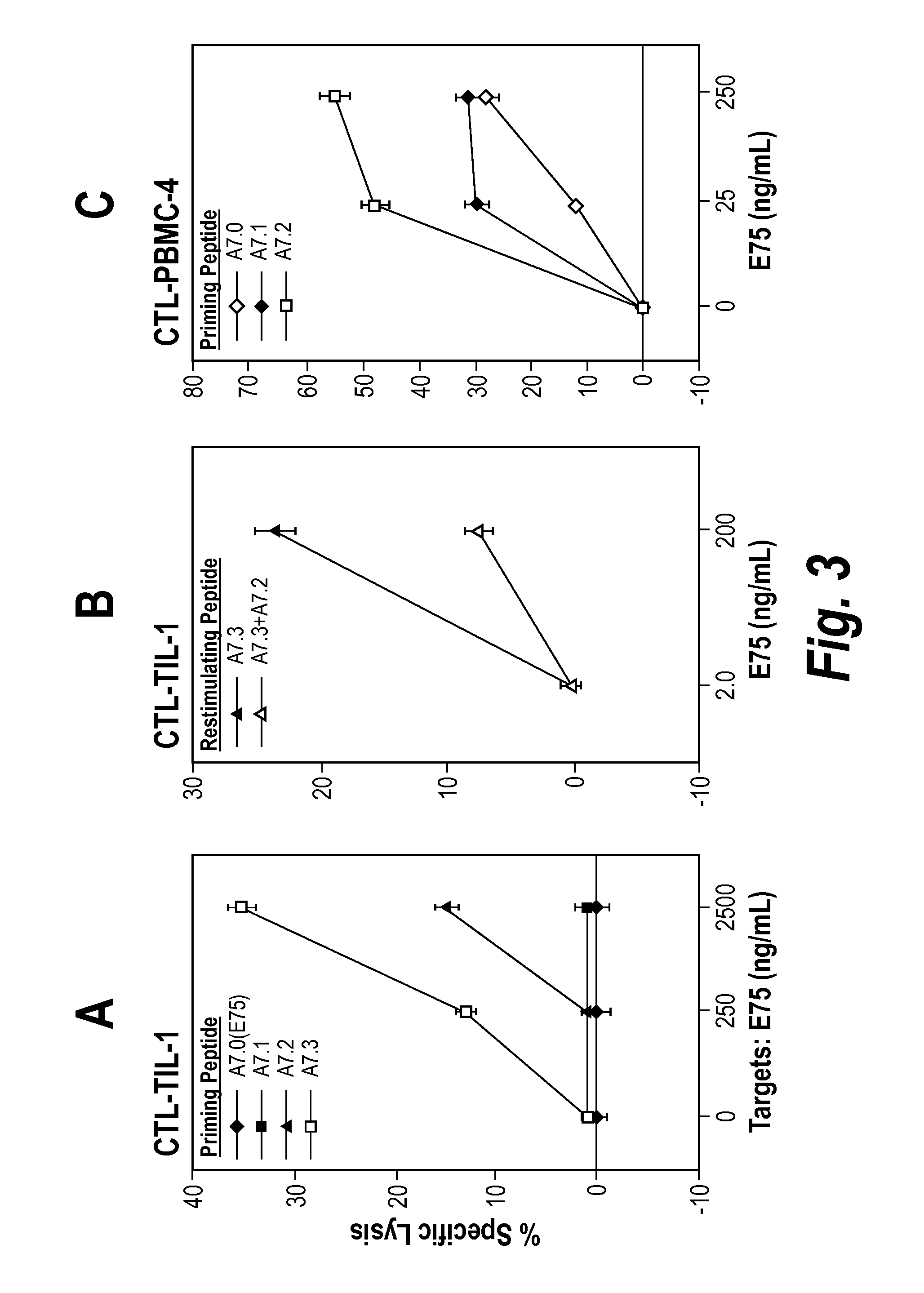Controlled modulation of amino acid side chain length of peptide antigens
a technology of amino acid side chain and peptide antigen, which is applied in the field of immunology and cancer biology, can solve the problems of poor immunogenicity, inability to show significant effects both on cure rate and immunological response to vaccine treatment in patients, and inability to achieve significant effects on cure rate, so as to increase the affinity of the antigen for a t cell receptor, and extend or shorten the side chain
- Summary
- Abstract
- Description
- Claims
- Application Information
AI Technical Summary
Benefits of technology
Problems solved by technology
Method used
Image
Examples
example 1
Modified Epitopes
[0177]A modified epitope was created based on the CTL epitope from the HER-2 proto-oncogene protein product. The sequence of the native peptide (SEQ ID NO:2) is as follows:
[0178]
123456789KIEGSLAFL
[0179]A preliminary analysis of the possible orientation of the amino acids in this peptide when bound to HLA-A2 indicated that Gly4 and Ala1 were good candidates for CH2-extension because Gly4 lacks a side chain, and Ala7 has one CH3 group as a side chain. Since Ala7 is preceded by Leu6 and followed by Phe8 and Leu9, it was hypothesized that the CH3 side chain in Ala7 points either sideways or upwards (Leu9, down, Phe8 side or up and Ala7, side or up). Based on this, it was decided to replace the Ala7 with the unnatural aminoacids: γ-aminobutyric (Abu) which has 1 CH2 group extension compared with Ala7 (designated herein A7.1), norvaline (NVal) which has 2 CH2 groups extending linearly from Ala7 (designated herein A7.2) and norleucine (Nleu) which has 3 CH2 groups extendin...
example 2
Modeling of the E75-HLA-A2 Complex
[0183]E75-HLA-A2, models were generated by replacement of the HTLV-1 (Tax) peptide with E75 (Garboczi et al., 1996; Madden et al., 1993; Baker et al., 2000; Gillogly et al., 2000). Tax shows the highest structural similarity of the models available in public databases. The Tax peptide: L L F G Y P V Y V (SEQ ID NO:1) is similar to E75: KIEG SL AFL, (SEQ ID NO:2) with respect aliphatic side chain extension in the first 4 and the last 3 amino acids, with only Lys1 and Phe8 differing by NH3 and OH group extensions. The central area of Tax is currently under intense scrutiny, with the analog P6A showing even more similarity in the core with E75 (Leu6) (Baker et al., 2000).
[0184]Here, the inventors replaced Ala7 with the unnatural amino acids γABU, NVal, and NLeu, because the side chains of these amino acids linearly extend the CH3 group of Ala7, with 1, 2, and 3 CH2 groups, respectively. This was deemed preferred over the replacements with Val and ILe, ...
example 3
Confirmation of CTL Epitope Modification Effect
[0185]The CH2 side chains of the Ala7(E75=A7.0) and γABU7 (A7.1) point sideways while the side chains of NVal (A7.2) and of NLeu point upwards. Since Gly4 lacks side chains, it is likely that addition of CH2 side chains in Gly4 by replacement with Ala, γAbu, NVal, and Nleu will lead to peptide with CH2 side chains pointing upwards and / or sideways, creating new contacts for TCR. The fact that the substitution Gly to NVal is immunogenic was demonstrated by the ability of peptide G4.3 to induce both IFN-γ and IL-2 at stimulation of PBMC. A7.1, A7.2, A7.3 were of similar although slightly lower HLA-A2 stabilizing ability, as determined by on- and off-kinetics.
PUM
| Property | Measurement | Unit |
|---|---|---|
| concentration | aaaaa | aaaaa |
| temperatures | aaaaa | aaaaa |
| weight | aaaaa | aaaaa |
Abstract
Description
Claims
Application Information
 Login to View More
Login to View More - R&D
- Intellectual Property
- Life Sciences
- Materials
- Tech Scout
- Unparalleled Data Quality
- Higher Quality Content
- 60% Fewer Hallucinations
Browse by: Latest US Patents, China's latest patents, Technical Efficacy Thesaurus, Application Domain, Technology Topic, Popular Technical Reports.
© 2025 PatSnap. All rights reserved.Legal|Privacy policy|Modern Slavery Act Transparency Statement|Sitemap|About US| Contact US: help@patsnap.com



